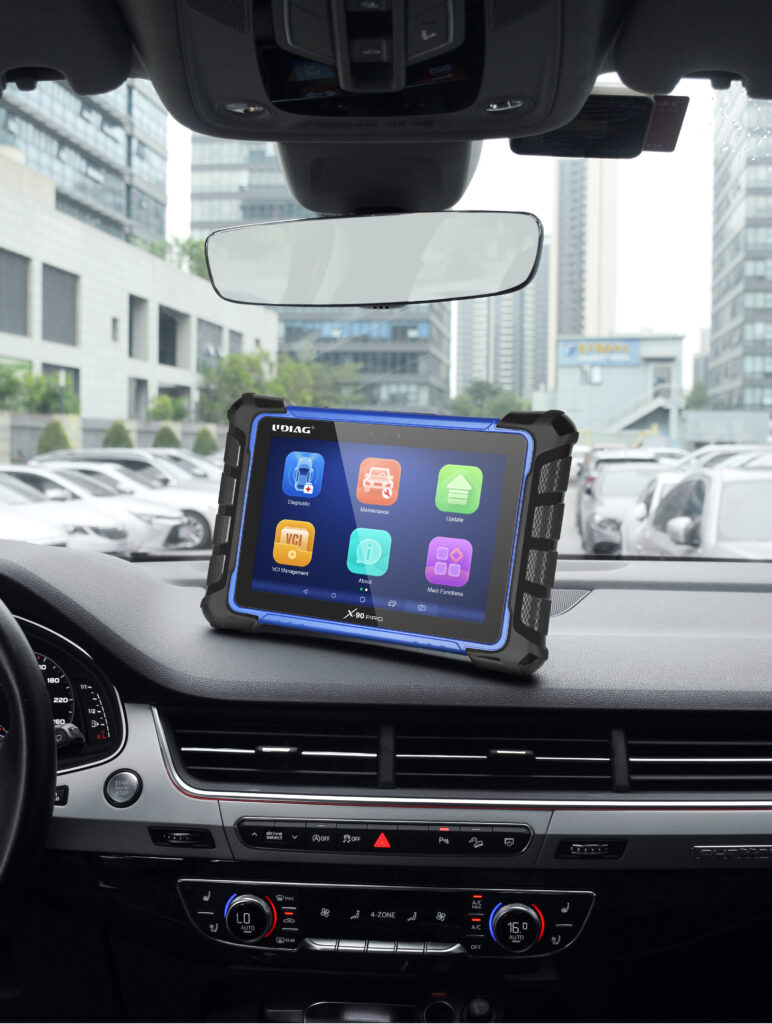Are diagnostic tablets suitable for complete beginners with no technical background?
2024-07-01 by UDIAG
Diagnostic tablets are revolutionizing vehicle maintenance by offering advanced tools to identify and troubleshoot automotive issues. These devices, once the domain of seasoned mechanics, are increasingly marketed towards everyday car owners. This essay explores whether diagnostic tablets are suitable for complete beginners with no technical background.

I. Overview of Diagnostic Tablets
Diagnostic tablets are handheld devices that connect to a vehicle’s onboard diagnostic (OBD) system, providing real-time data and diagnostic codes. They can perform a wide range of functions, from reading and clearing fault codes to monitoring live data and performing system tests. Popular brands include Autel, Launch, and Snap-on, each offering models with varying capabilities. The tablets work by interfacing with the vehicle’s computer systems, retrieving data, and presenting it in a user-friendly format.
II. User-Friendliness for Beginners
One of the primary selling points of modern diagnostic tablets is their user-friendly design. The interfaces are often designed with intuitive layouts, featuring visual aids and icons that make navigation straightforward. Many tablets include step-by-step guides and built-in tutorials to assist users in diagnosing and fixing problems. These guides are invaluable for beginners, as they offer clear instructions and troubleshooting assistance. Additionally, many tablets offer simplified language options and glossaries to help users understand technical terms.
III. Learning Curve and Training
While diagnostic tablets are designed to be user-friendly, there is still a learning curve for complete beginners. Initial setup and configuration are generally straightforward, with user manuals providing detailed instructions. Manufacturers often provide extensive educational resources, including online tutorials and videos, to help users get started. Customer support and community forums are also valuable resources, offering peer support and advice. Local workshops and training sessions can further enhance a beginner’s understanding and confidence in using these devices.
IV. Potential Challenges for Beginners
Despite their user-friendly design, beginners may still face challenges when using diagnostic tablets. The technical jargon and concepts involved in vehicle diagnostics can be overwhelming for those with no background in the field. Interpreting diagnostic codes requires some understanding of vehicle systems, and the variability across different makes and models can add to the complexity. Beginners may need to spend time learning how to interpret the data correctly and understand the implications of different fault codes.
V. Case Studies and User Experiences
User testimonials and case studies provide valuable insights into the experiences of beginners using diagnostic tablets. Many beginners report positive experiences, highlighting the ease of use and the confidence gained from being able to diagnose and fix minor issues themselves. Comparative studies often show that modern diagnostic tablets score highly on ease of use, particularly those designed with beginners in mind. Success stories from users who have effectively resolved issues with the help of these devices are common, although some also highlight common pitfalls, such as misinterpreting codes or struggling with more complex diagnostics.
VI. Recommendations for Beginners
For beginners considering a diagnostic tablet, it is essential to choose the right device. Key features to look for include user-friendly interfaces, comprehensive tutorials, and good customer support. Budget considerations are also important, as prices can vary significantly. A gradual learning approach is recommended, starting with basic functions and gradually advancing to more complex diagnostics as confidence and understanding grow. It is also important to recognize when professional help is needed. While diagnostic tablets can provide valuable insights, some issues are best left to experienced mechanics.
Conclusion
Diagnostic tablets offer a valuable tool for vehicle maintenance, even for complete beginners with no technical background. Their user-friendly design, comprehensive tutorials, and support resources make them accessible to a wide audience. While there is a learning curve and potential challenges, with the right approach and resources, beginners can effectively use these devices to diagnose and troubleshoot vehicle issues. Continuous learning and seeking professional help when necessary can further enhance the benefits of using diagnostic tablets. Overall, they are a worthwhile investment for those willing to invest the time to learn and explore their capabilities.
FAQs
Q1: What is a diagnostic tablet?
A1: A diagnostic tablet is a handheld device that connects to a vehicle’s onboard diagnostic (OBD) system. It retrieves real-time data and diagnostic codes to help diagnose and troubleshoot automotive issues.
Q2: Can someone with no technical background use a diagnostic tablet?
A2: Yes, many diagnostic tablets are designed with user-friendly interfaces, step-by-step guides, and tutorials to assist complete beginners in using them effectively.
Q3: What features should beginners look for in a diagnostic tablet?
A3: Beginners should look for diagnostic tablets with intuitive interfaces, visual aids, built-in tutorials, simplified language options, and good customer support. Budget considerations are also important.
Q4: Is there a learning curve for using a diagnostic tablet?
A4: Yes, there is a learning curve, especially for those with no technical background. However, most diagnostic tablets come with comprehensive manuals, online tutorials, and customer support to help users get started.
Q5: What kind of training resources are available for beginners?
A5: Training resources for beginners include user manuals, online tutorials, video guides, manufacturer support, community forums, and local workshops or training sessions.
Q6: What are the common challenges beginners face when using diagnostic tablets?
A6: Common challenges include understanding technical jargon and concepts, interpreting diagnostic codes, and dealing with the variability of vehicle systems across different makes and models.


